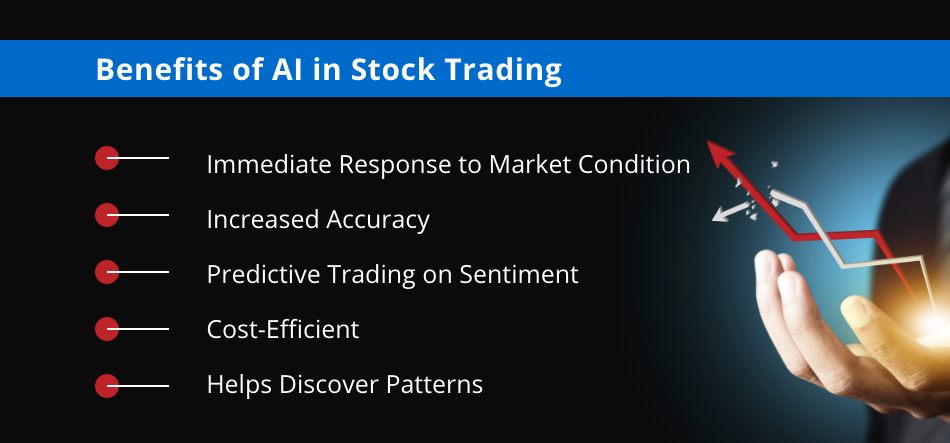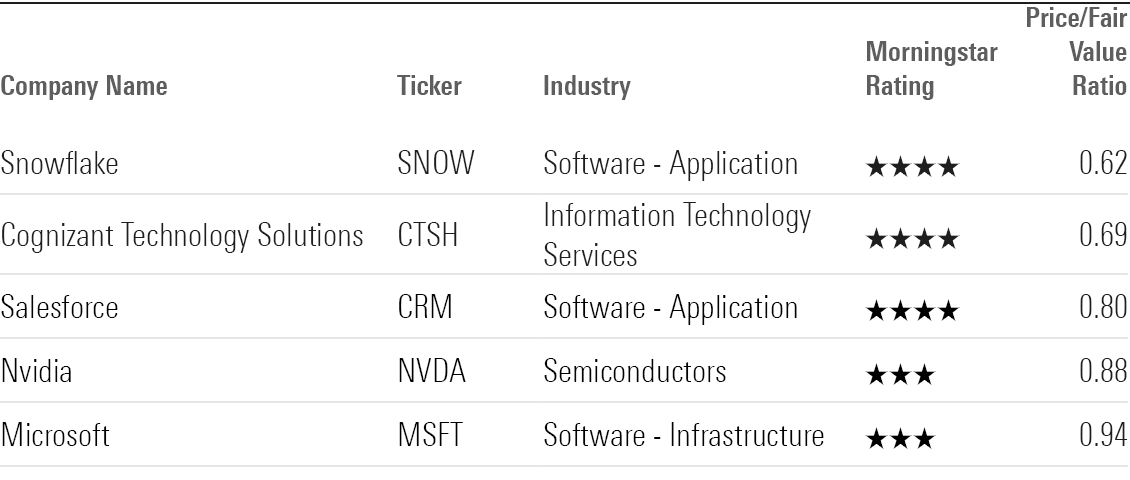20 Free Facts For Deciding On AI Stock Trading Sites
20 Free Facts For Deciding On AI Stock Trading Sites
Blog Article
Top 10 Tips For Evaluating The Market Coverage Provided By Ai Trading Platforms That Forecast Or Analyze Stocks.
Market coverage is a critical element to take into consideration when evaluating AI stock predicting/analyzing trading platforms, as it determines the range and depth of markets and assets you can access. With a platform that offers broad coverage, you can diversify your portfolio and avail of opportunities across the globe. It is also possible to adjust to various trading strategies. Here are 10 suggestions for evaluating the coverage of the platforms.
1. Evaluate Supported Asset Classes
Stocks: Make sure that the platform covers major stock exchanges (e.g., NYSE, NASDAQ, LSE, HKEX) and also includes small-cap, large-cap and mid-cap stock.
ETFs: Make sure that the platform offers an array of ETFs that offer diversified exposure across different categories, themes and even regions.
Options and futures. Make sure the platform has derivatives such as options, futures and other instruments leveraged.
Commodities and Forex: Determine whether the platform offers the forex pair and precious metals, energy commodities and agricultural products.
Cryptocurrencies. Check if it supports all major cryptocurrencies and altcoins (e.g. Bitcoin, Ethereum).
2. Check coverage of your area
Global markets: The platform should cover major global markets including North America and Europe, Asia-Pacific and emerging markets.
Regional focus Make sure that the platform specializes on certain markets or regions that are in line with your interest in trading.
Local exchanges. Find out if the platform allows exchanges regional or local for your area.
3. Think about comparing real-time data to delayed data Delayed Data
Real-time Market Data: The platform needs to offer real-time data on trading that allows for quick decision-making.
Delayed data: Find out whether you are able to get delayed data for free or at a discounted cost. This could be sufficient for investors who are looking to invest long-term.
Data latency: Check whether the platform is able to reduce latency in real-time feeds of data especially in high-frequency trading.
4. Assess the historical data availability
The breadth and depth of historical data: Ensure that the platform has ample historical data (e.g. for at least 10 years) for backtesting.
Granularity: Check whether the historical data contains intraday granularity, as well as daily, weekly and monthly.
Corporate actions: Verify that the historical data taken into account stock splits (if applicable), dividends, and any other corporate action.
5. Check the market depth and the order book details
Data Level 2: Ensure that the platform provides Level 2 (order book depth), for better price discovery.
Spreads of bids: Make sure that the platform displays real-time bid-ask spreads for precise pricing.
Volume data: Verify that the platform offers comprehensive volume data to study market liquidity.
6. Assess Coverage to determine Indices and Sectors
Major indices: Check that the platform covers major indices (e.g., S&P 500, NASDAQ 100, FTSE 100) to benchmark and index-based strategies.
Data for specific industries If you're looking to conduct a more specific analysis, look into whether there are data available for specific industries.
Custom indexes. Find out if you are able to build or track custom indices using your criteria.
7. Evaluate Integration with Sentiment Data and News
News feeds - Ensure your platform is equipped with real-time, market-moving news feeds (e.g. Bloomberg, Reuters).
Sentiment Analysis: Check whether the platform has sentiment analysis tools that are built on news, social media, or other data sources.
Event-driven Strategies: Verify whether the platform supports strategies that are triggered by certain events (e.g. economic reports or earnings announcements).
8. Check for Multimarket Trading Abilities
Cross-market trading: Make sure that the platform allows for trading across asset and market categories using a common interface.
Currency conversion: Check if your platform supports multiple-currency trading and automated currency conversion.
Support for time zones of different times It is important to ensure that the platform allows trading globally on markets across different time zones.
9. Review the coverage of different data sources
Alternative data: To get unique insights, check if the platform is able to incorporate different data sources.
ESG data - Check that the platform offers environmental, governance, and social information (ESG). This is important for an investment that is socially conscious.
Macroeconomic data - Make sure that the platform has macroeconomic information (e.g. inflation, GDP) for fundamental analysis.
10. Review Market Feedback and User Reviews. Reputation
User reviews: Read user reviews to determine the platform's market coverage, reliability, and usability.
Check the reputation of the platform in terms of its coverage or industry awards.
Case studies: Check for case studies, testimonials, and other details that highlight the platform's performance on certain market segments or asset types.
Bonus Tips
Trial period: Try a free trial or demo to evaluate the platform's market coverage as well as data quality.
API access Make sure to check if the API of the platform permits customized analysis using market data.
Customer support: Make sure the platform can help in the case of market-related questions or data-related issues.
Follow these tips to evaluate the market coverage offered by AI stock trading platforms. Choose a platform with access to the markets, data and tools you need to make trading successful. Comprehensive market coverage will enable you to diversify, explore the market, and adjust your portfolio to changing market conditions. Take a look at the top best ai trading app info for site tips including AI stock, chart ai trading assistant, ai trading, ai investing platform, best AI stock, market ai, chart ai trading assistant, best ai for trading, ai investment app, chart ai trading assistant and more.
Top 10 Tips To Assess The Scalability Ai Stock Predicting Trading Platforms
It is essential to determine the scalability and performance of AI-driven trading and stock prediction platforms. This will guarantee that they're able to handle growing data volumes as well as market complexity and user demands. Here are the top 10 suggestions for evaluating the scalability.
1. Evaluate Data Handling Capacity
Tip: Check if the platform is able to process and analyze large datasets (e.g., historical stock data, live market feeds, as well as alternative data such as news or social media).
Why: Scalable platforms need to be able to handle growing volumes of data without compromising performance.
2. Test the Real-Time Processing Capability
TIP: Examine how the platform can process real-time data streams for example, live stock prices or breaking news.
What's the reason? The analysis in real-time of your trading decisions is essential because delays could lead you to missing opportunities.
3. Cloud Infrastructure and Elasticity The Cloud Infrastructure and Elasticity
Tip - Determine if a platform is using cloud-based infrastructure, e.g. AWS or Google Cloud.
Cloud-based platforms are a great way to gain elasticity. They allow the system to be scaled up and down according to the need.
4. Algorithm Efficiency
Tips: Assess the efficiency of computation in AI models (e.g. deep learning and reinforcement learning, etc.)) used for predictions.
Why: Complex algorithms are resource-intensive. Therefore, optimizing them will help you scale.
5. Study the parallel Processing and distributed computing
Tips: Check whether the platform is using the frameworks of parallel processing or distributed computing frameworks.
The reason: These technologies enable more efficient data processing and analysis across multiple nodes.
Review API Integration & Interoperability
Tip Check the platform's capability to interface with APIs that are external (e.g., brokers, market data providers, APIs).
Why? The platform can adapt to changing market conditions and data sources because of seamless integration.
7. Analyze User Load Handling
Use a high-traffic simulation to test the response of the platform under pressure.
The reason: Scalable platforms must deliver the same quality of service regardless of how many users there are.
8. Examine the Model Retraining Adaptability
Tip: Determine how often and efficiently the AI models are re-trained using new data.
The reason is that markets change and models have to change quickly to keep their the accuracy.
9. Check for Fault-Tolerance and Redundancy
Tip: Make sure the platform is equipped with failover mechanisms to deal with software or hardware malfunctions.
Why: Downtime is costly for trading. Fault tolerance is therefore crucial to the scalability.
10. Monitor Cost Efficiency
Tip: Consider the cost of scaling up your platform. Be aware of cloud resources like data storage as well as computing power.
The reason: Scalability shouldn't be a burden that is unsustainable which is why balancing performance with expense is critical.
Bonus Tip: Future-Proofing
Make sure the platform is designed to incorporate emerging technologies (e.g. quantum computing, quantum computing and advanced NLP) and adapt to changes in the regulatory environment.
These aspects can assist you in assessing the impact of AI-based stock prediction as well as trade platforms. They'll also be sure that they are robust efficient, reliable and ready to expand, and are future-proof. Take a look at the top rated ai investment tools recommendations for site tips including AI stock predictions, AI stock price prediction, AI stock prediction, AI stock trader, stock predictor, AI stock investing, AI stock investing, best AI stock prediction, stock trading ai, chart analysis ai and more.